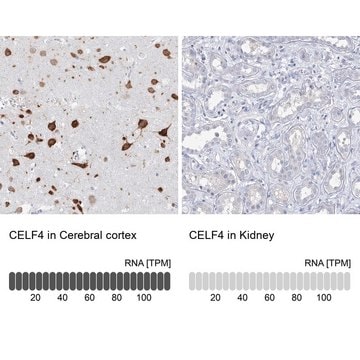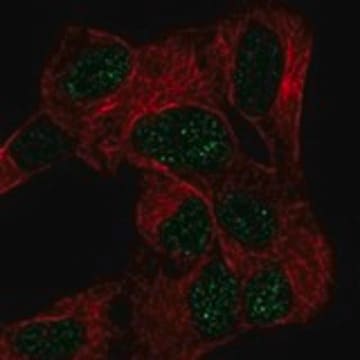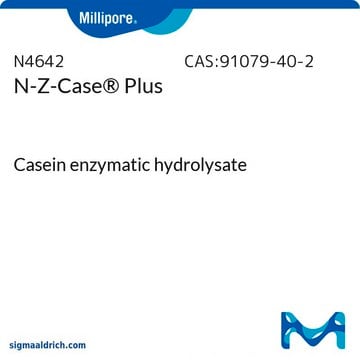MABN2418
Anti-CELF4 Antibody, clone N446/80
clone N446/80, from mouse
Synonim(y):
CUGBP Elav-like family member 4, Bruno-like protein 4, CUG-BP- and ETR-3-like factor 4, RNA-binding protein BRUNOL-4
About This Item
Polecane produkty
pochodzenie biologiczne
mouse
forma przeciwciała
purified immunoglobulin
rodzaj przeciwciała
primary antibodies
klon
N446/80, monoclonal
reaktywność gatunkowa
human, rat, mouse
opakowanie
antibody small pack of 25 μL
metody
western blot: suitable
izotyp
IgG2aκ
numer dostępu NCBI
numer dostępu UniProt
docelowa modyfikacja potranslacyjna
unmodified
informacje o genach
human ... CELF4(56853)
Opis ogólny
Specyficzność
Immunogen
Zastosowanie
Neuroscience
Jakość
Western Blotting Analysis: A 1:1,000 dilution of this antibody detected CELF4 in human hippocampus tissue lysate.
Opis wartości docelowych
Postać fizyczna
Przechowywanie i stabilność
Inne uwagi
Oświadczenie o zrzeczeniu się odpowiedzialności
Not finding the right product?
Try our Narzędzie selektora produktów.
Certyfikaty analizy (CoA)
Poszukaj Certyfikaty analizy (CoA), wpisując numer partii/serii produktów. Numery serii i partii można znaleźć na etykiecie produktu po słowach „seria” lub „partia”.
Masz już ten produkt?
Dokumenty związane z niedawno zakupionymi produktami zostały zamieszczone w Bibliotece dokumentów.
Nasz zespół naukowców ma doświadczenie we wszystkich obszarach badań, w tym w naukach przyrodniczych, materiałoznawstwie, syntezie chemicznej, chromatografii, analityce i wielu innych dziedzinach.
Skontaktuj się z zespołem ds. pomocy technicznej







